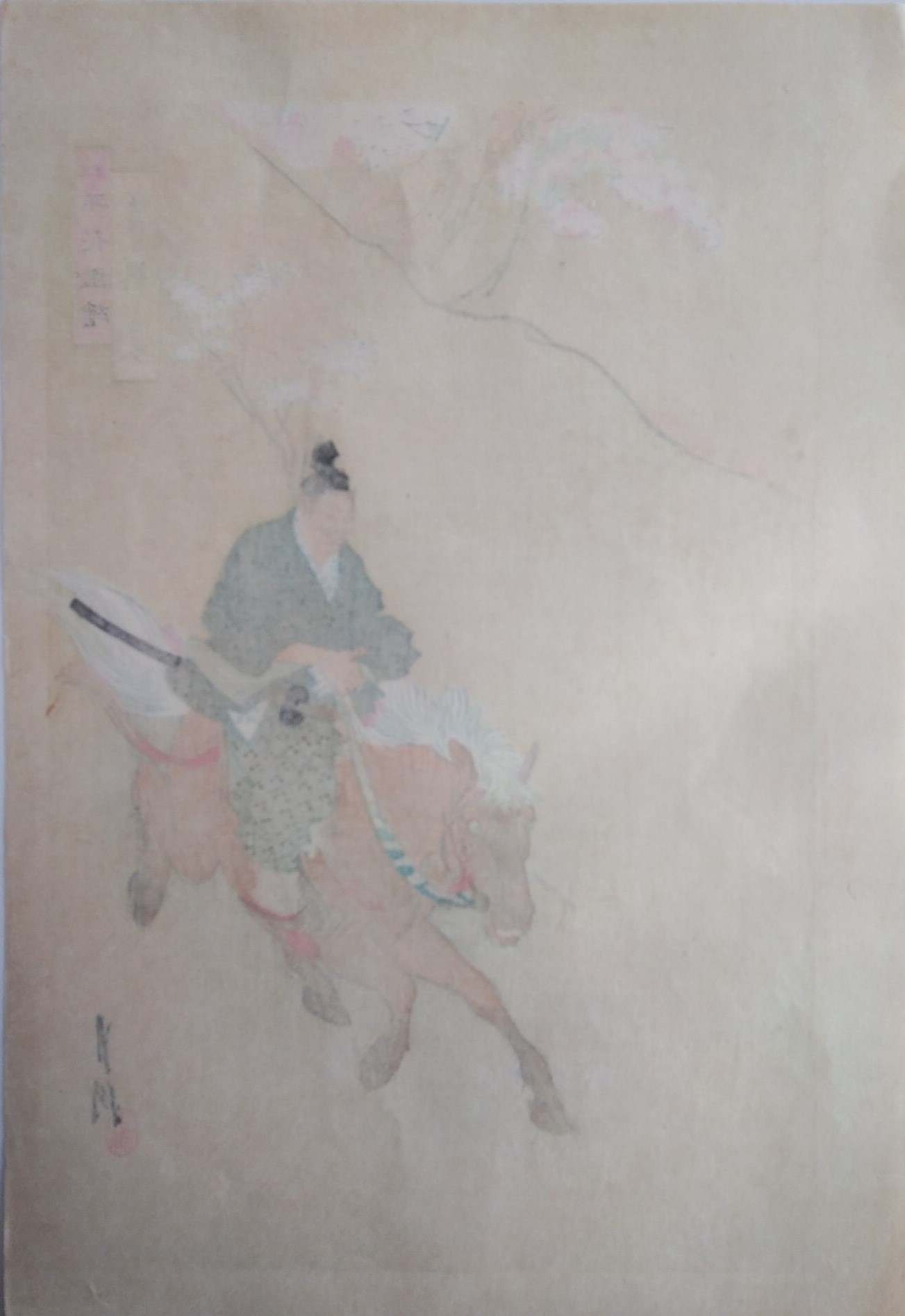


Good condition. Colours are clear and saturation is good. There are no holes, creases nor fixing. Any remarkable stain. It has not backed nor trimmed. Embellished with gauffrage technique.
The whip hunting for the cherry blossom , horsemanship
(Sakuragari no muchi, bajutsu, 桜狩の鞭、馬術).
What it looks to be a warrior or a noble is riding a horse down from a hill in spring day, as it is suggested by the cherry blossom trees on the back.
The title of the print refers to what are called "sakura gari" and "bajutsu", respectively cherry blossom hunting and horsemanship.
While the meaning of horsemanship is pretty clear and doesn`t leave space to further interpretations, the same cannot be told for the cherry blossom hunting. According to different
Japanese literary sources it may used referring to three different, but related, circumstances. The first one refers to what is commonly known as hanami, or cherry blossom viewing.
The second one refers to takagari, or falconry, that nobles used to practice in Katano, a town that today is part of the Ōsaka prefecture and which was famous for its beautiful cherry
blossom trees, or close to the Imperial household in Kyōtō while enjoying the cherry blossom view a the same time.
The last one (often related to falconry and horsemanship) refers to kicking the horse chin with the stirrups, in case it abruptly stopped moving bending its head towards its chest.
Good condition. Colours are clear and saturation is good. There are no holes, creases nor fixing. Any remarkable stain. It has not backed nor trimmed. Embellished with gauffrage technique.
| Price | |
|---|---|
| Series | Pictures of flowers of Japan (Nihon hana Zue, 日本花図絵). |
| Author | Ogata Gekkō (尾形月耕). |
| Size | Large (ōban, 大判) 36,5cm x 25,5cm (14,37 x 10,03 inches). |
| Publisher | Sasaki Toyokichi (佐々木豊吉). |
| Number | 33/36 |
| Genre | Musha-e (武者絵), monogatari-e (物語絵) rekishi-ga (歴史画).. |
| Period | C. 1897 |
| Trimmed | No |
| Backed | No |
| Code | OGK01003 |
